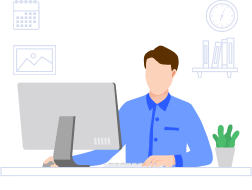How IoT & Smart Home Tech Will Transform Your Life
In the age of rapidly advancing technology, the integration of IoT and smart home automation is revolutionizing the way we live. These innovative systems are poised to transform everyday tasks, enhance convenience, and elevate the overall quality of our lifestyles. Let's explore the profound impact that IoT and smart home automation are set to have on the way we interact with our living spaces. Gone are the days of manual control; IoT and smart home automation offer unparalleled convenience. With voice commands, controlling home appliances becomes as simple as uttering a few words. Picture dimming the lights or adjusting the thermostat without lifting a finger. Moreover, automated home security systems provide peace of mind, offering real-time monitoring and alerts. IoT devices pave the path towards a greener lifestyle by optimizing energy consumption. Smart thermostats learn your preferences, adjusting temperature settings to maximize efficiency. Meanwhile, smart lighting systems intelligently manage illumination, reducing electricity usage without compromising comfort. These innovations not only lower utility bills but also contribute to environmental sustainability. Safety is paramount, and IoT technology strengthens home security in unprecedented ways. Surveillance cameras offer vigilant monitoring, deterring potential intruders and providing valuable evidence in case of incidents. Additionally, smart locks enhance access control, enabling homeowners to remotely manage entry and grant permissions with ease. One size doesn't fit all, and IoT and smart home automation recognize this by offering personalized experiences. Imagine arriving home to find your favorite lighting ambiance and temperature settings awaiting you, tailored to your preferences. Moreover, integration with wearable devices ensures seamless experiences, with your home adapting to your needs as you move through it. IoT and smart home automation will streamline tasks, enhance convenience, and bolster safety, offering personalized experiences tailored to individual preferences. Ready to experience the future of connected living? Connect with a leading IoT App Development company to explore how IoT and smart home automation can revolutionize your lifestyle.How IoT and Smart Home Tech Enhance Everyday Life
1. Enhanced Convenience with Smart Home Automation
2. Boost Energy Efficiency Using Smart Devices
Share your project details to build your path toward success.
3. Improve Home Safety with Smart Technology
4. Enjoy Personalized Experiences with IoT
Conclusion














